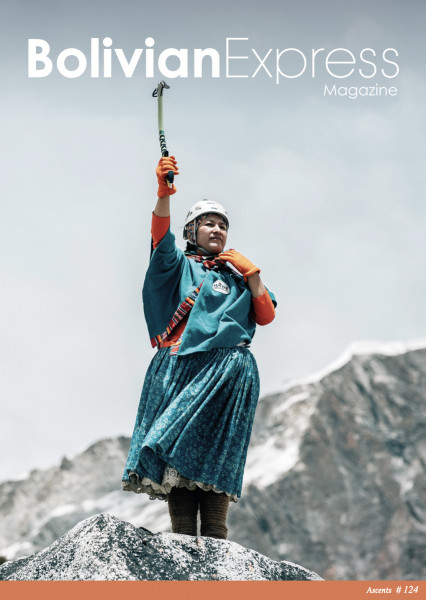
Liita Gonzales grew up in El Alto, splitting time between the bustling city and the agricultural community of Cañaviri, an hour and a half away, nestled in the valley between the mountains of Condoriri and Huayna Potosí. Her father was a mountain guide, and her mother a cook on his tours. She recounts her parents returning from mountaineering trips, tired and dirty. As a child, she always asked her father when she could join them on a trek, wondering what made it worth the struggle up a mountain.
Uyuni is known around the world for its famous salt flats. But while the Salar de Uyuni is certainly not to be missed, a three-day tour around the region proves there is more waiting to be discovered on the shores of the salt desert.
Nearby lagoons of different colours are home to an abundance of flamingos, hot springs, the Salvador Dali dessert, abd the Arbol de Piedra (stone tree), among other attractions. The numerous stops reveal not only incredible scenery, but also some interesting features of Bolivian history. The Train Cemetery outside of Uyuni is a collection of rusty, retired trains covered in graffiti, and scrap metal sculptures welded by local artists. The trains make a great backdrop for photographs and are fun to climb.
Sucre is the true capital of Bolivia, with La Paz serving as the seat of government activity. And these two cities couldn’t be more different. The architecture of Sucre’s white colonial streets gives the city a quaint feel. The birthplace of Bolivian independence, the bell of the city’s San Francisco Basilica was rung to signify the start of the movement against the Spanish in 1809. Its storied and preserved past earned Sucre the designation of a UNESCO World Heritage Site in 1991.
But history in Sucre does not begin in the colonial period. At the nearby Parque Cretácico, dinosaur footprints have marked the ground for nearly 70 million years. Tectonic shifts in the area mean that the footprints now trail over a near-vertical wall, and are now part of the longest trail of dinosaur footprints in the world.
For those looking for cultural connections, Sucre is a great town to take some Spanish classes, and you can enquire in most hotels or hostels for these. Cooking classes offered by La Boca del Sapo and others are a great opportunity to learn about the significance of local ingredients from passionate chefs, who guide you as you give traditional cooking methods a go.
The town of Rurrenabaque acts as Bolivia’s gateway to the Amazon rainforest and pampas. This is the place to discover Bolivia’s diverse wildlife. There are ample indigenous-run tour operators to choose from to visit both areas, and Rurrenabaque is typically their starting point.
Bolivia is one of the more affordable countries to visit the largest and most biodiverse area of rainforest in the world. A jungle tour through Madidi National Park gives you the opportunity to see trees of incredible height and other wildlife. I was lucky enough to visit during nesting season when macaws stand guard over their precious nests. The jungle is also home to sloths, many species of frogs, and even jaguars.
The pampas tour takes you to the Yucuma River. Here in the savannah-like setting, you will almost certainly see capybaras grazing and swimming, caimans peeking out from underwater, and various species of monkeys hanging in the trees.
Rurrenabaque offers some of the richest wildlife around, but brace yourself for the intense heat and humidity. And don’t forget the bug spray!

 Download
Download





















